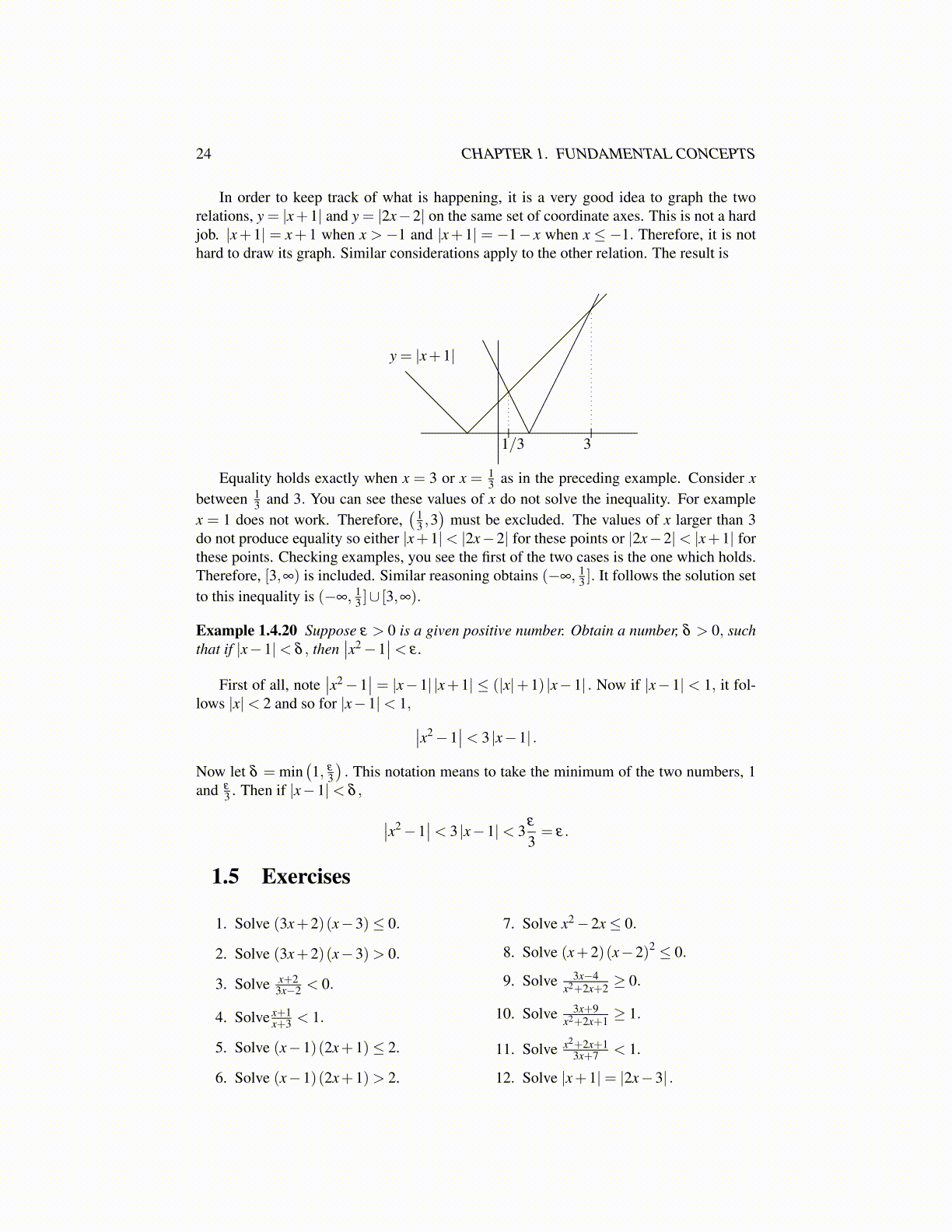
24 CHAPTER 1. FUNDAMENTAL CONCEPTS
In order to keep track of what is happening, it is a very good idea to graph the tworelations, y = |x+1| and y = |2x−2| on the same set of coordinate axes. This is not a hardjob. |x+1| = x+ 1 when x > −1 and |x+1| = −1− x when x ≤ −1. Therefore, it is nothard to draw its graph. Similar considerations apply to the other relation. The result is
1/3 3
y = |x+1|
Equality holds exactly when x = 3 or x = 13 as in the preceding example. Consider x
between 13 and 3. You can see these values of x do not solve the inequality. For example
x = 1 does not work. Therefore,( 1
3 ,3)
must be excluded. The values of x larger than 3do not produce equality so either |x+1|< |2x−2| for these points or |2x−2|< |x+1| forthese points. Checking examples, you see the first of the two cases is the one which holds.Therefore, [3,∞) is included. Similar reasoning obtains (−∞, 1
3 ]. It follows the solution setto this inequality is (−∞, 1
3 ]∪ [3,∞).
Example 1.4.20 Suppose ε > 0 is a given positive number. Obtain a number, δ > 0, suchthat if |x−1|< δ , then
∣∣x2 −1∣∣< ε .
First of all, note∣∣x2 −1
∣∣ = |x−1| |x+1| ≤ (|x|+1) |x−1| . Now if |x−1| < 1, it fol-lows |x|< 2 and so for |x−1|< 1, ∣∣x2 −1
∣∣< 3 |x−1| .
Now let δ = min(1, ε
3
). This notation means to take the minimum of the two numbers, 1
and ε
3 . Then if |x−1|< δ , ∣∣x2 −1∣∣< 3 |x−1|< 3
ε
3= ε.
1.5 Exercises
1. Solve (3x+2)(x−3)≤ 0.
2. Solve (3x+2)(x−3)> 0.
3. Solve x+23x−2 < 0.
4. Solve x+1x+3 < 1.
5. Solve (x−1)(2x+1)≤ 2.
6. Solve (x−1)(2x+1)> 2.
7. Solve x2 −2x ≤ 0.
8. Solve (x+2)(x−2)2 ≤ 0.
9. Solve 3x−4x2+2x+2 ≥ 0.
10. Solve 3x+9x2+2x+1 ≥ 1.
11. Solve x2+2x+13x+7 < 1.
12. Solve |x+1|= |2x−3| .